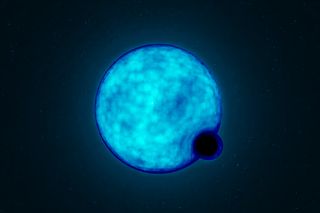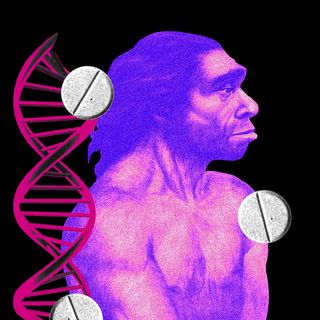
Scientists Discover the First ‘Invisible’ Black Hole Outside the Milky Way
“We’ve identified a needle in a haystack.”

In a neighboring galaxy sits a “quiet” black hole, about nine times the mass of the Sun. Its existence is both perplexing and stirring: the black hole is dormant, invisible, unaccompanied by the usual stellar explosion surrounding these mysterious forces of the universe. Astronomers recently discovered this fascinating void, making it the first “dormant” black hole to be found outside the Milky Way.
Dormant black holes are thus a “special” category, “when one star in a binary pair dies before the other, leaving a black hole that can’t escape the other’s gravity but does not suck up matter or emit its own powerful energy as expected,” as Caroline Delbert explained in Popular Mechanics. The dead collapsed star doesn’t push the other one away.
Published in the journal Nature Astronomy on Monday, the study details the discovery of the black hole binary system in the galaxy called the Large Magellanic Cloud, a small system that is gravitationally entangled with the Milky Way. This discovery is remarkable because it can help scientists identify a whole population of quiet, hidden black holes. This is a “very exciting discovery,” said a team of researchers from the Center for Astrophysics, at Harvard & Smithsonian (CfA), Amsterdam University, and other associated institutions.
The dormant black hole’s story is a story of believing, and renewed hope. “We’ve identified a needle in a haystack,” said Tomer Shenar, an astrophysicist at the University of Amsterdam in the Netherlands and lead author of the new research, in a statement, referencing the difficulties with confirming that the structure indeed is a black hole. “Such populations [of dormant black holes] in our own Galaxy are not only sparser and smaller, but they’re also much more difficult to study since we need to look through clouds of dust and gas (though the new space telescope Webb could help there),” he further told Popular Mechanics. They are also harder to spot because of their inactivity — they don’t interact with their surroundings.
The black hole’s existence was thus first rooted in skepticism, with researchers spending two years looking at 1,000 massive stars in the star-forming region in the Large Magellanic Cloud. The stars, they think, could hold clues to black holes that may be orbiting them. The researchers looked at different black hole candidates. CfA co-author Kareem El-Badry, who is called a “black hole debunker” and a “black hole destroyer,” shared the skepticism. “When Tomer [one of the co-authors] asked me to double-check his findings, I had my doubts. But I could not find a plausible explanation for the data that did not involve a black hole,” explains El-Badry. In other words, the researchers were able to confirm the existence, characteristics, and being of the black hole binary system that has come to be named VFTS243.
Related on The Swaddle:
People Baffled at Google Maps Showing a ‘Black Hole’ in the Middle of the Ocean
Two things to know about stellar-mass black holes: they are usually formed when the core of a bright star collapses on itself, creating a structure with stunning gravity that can absorb anything and everything. And in a system of two stars (scientists believe most stars are part of a binary system anyway), the star collapsing leaves behind a black hole with a companion star in its orbit. In other words, the pair of stars inter-tangles with each other for billions of years until one of them collapses into a black hole.
So ideally, the dormant black hole VFTS243 should have come with the traces of an existing star, which wasn’t there. Scientists believe the star “vanished without any sign of a powerful explosion.” This is what scientists call a “direct-collapse scenario,” when a star collapsed without an explosion. According to Shenar, this discovery has “enormous implications for the origin of black hole mergers in the cosmos.”
The findings serve an instructive purpose, holding clues as to how stars collapse at the end of their lives. “VFTS 243 also provides an extremely rare empirical answer on a fundamental question in this context: what happens when massive stars collapse into black holes,” the researchers said.
But what goes into a black hole, how they are formed, and what knowledge they hold about the birth and death of stars are answers researchers are intrigued to explore. For now, discovering black holes inspires a reckoning too: We are forced to recognize the moment that anchors us.
Saumya Kalia is an Associate Editor at The Swaddle. Her journalism and writing explore issues of social justice, digital sub-cultures, media ecosystem, literature, and memory as they cut across socio-cultural periods. You can reach her at @Saumya_Kalia.
Related


The Benefits of Reaching Out to Old Friends, According to Research
